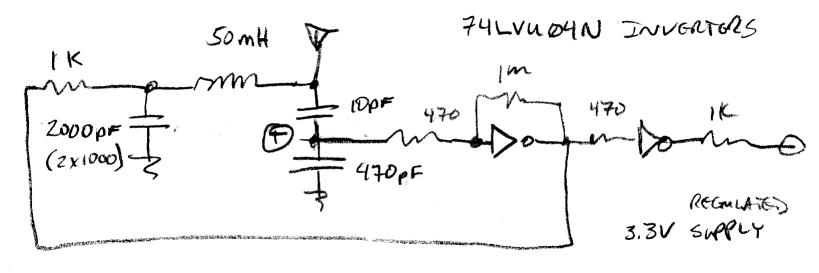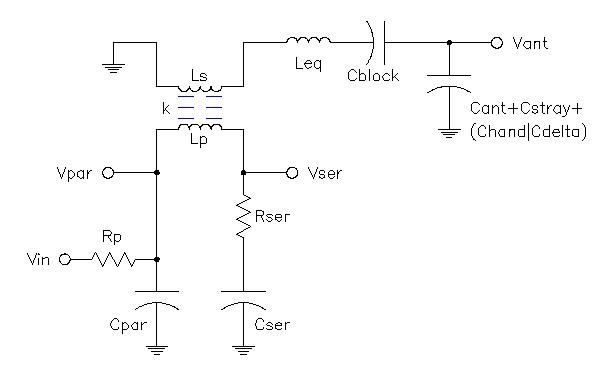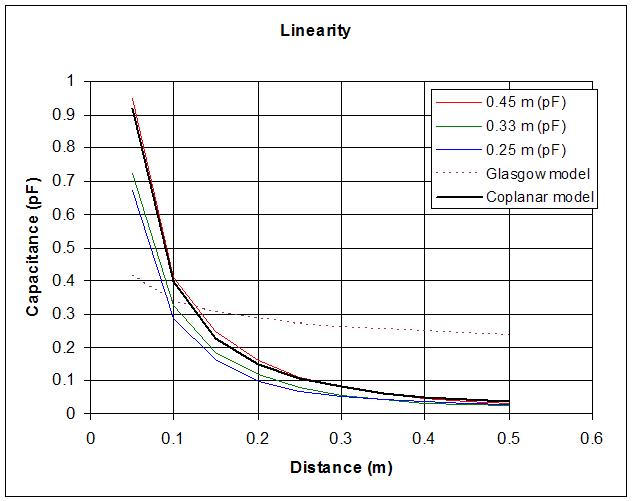"Got any pix of the TVox Tour guts?"
Yes, somewhere! ;-) .. A Japanese site did a deconstruction of one some years ago, with a few pictures (not a fraction as good as the E-Vox pics) - A friend was studying Japanese at the time (given it up now) and tried to translate for me, but it seemed that there was not much real technical detail. George Pavlov is not exactly forthcoming regarding whats inside it.. But there is no inductive equalizing, and when I asked him whether it used dynamic equalizing and told him my ideas on this he replied "No - I tried that at first, but it didnt work.." (I am probably paraphrasing severely).. He implied that the linearity was a function of "balancing"... (?) I have a strong feeling that the Tvox is not a "true" theremin - that it may be a CV based design.. or at least that its sound generation is seperated from its detection.
Anyway, I cannot find that Jap site again, but I do know I downloaded it - Tried finding this stuff but I think I upgraded my PC since then, so its probably in a pile of DVD's I backed everything up onto... I have a catalog, so am sure I will find it when I really look for it.
" It doesn't help that the example problems they solve in textbooks are the easy ones (two charged plates without fringing, coaxial infinite cylinders, sphere in space, etc"
This is the bane of my life - simple examples, or "examples" where steps are omitted - particularly with maths - long example which I can follow, then suddenly some numbers or functions appear from nowhere and I am lost... I find this particularly with transpositions - formula re-arranged and I cannot see how this re-arrangement was derived.
"A mostly digital Theremin could be simpler by an order of magnitude (here's hoping anyway,"
It is horribly complex - And I dont think (not sure here - this is just a hunch) that any part of it is a true analogue heterodyning theremin.. Looking at the front end, I think that Ref and VFO are devided and logically mixed with an XOR (much like the E-Pro - except that the following VC processing probably enables far better analogue waveshape manipulation on the E-Vox) .. I suspect that the oscillators are tuned such that, prior to division, one gets a high difference frequency, and that this drives a pitch to voltage converter.
Having a CV allows the logic level difference (which is scaled by the register switch which changes the division) to be processed by voltage controlled filters etc - perhaps even VC waveshaping .. And the CV is digitised for MIDI O/P.
Then there is a full analogue VC Synth with VCO, VCF,VCA, which mimmics the "theremin" voice to allow playback of MIDI recieved data.
BUT - The above is almost pure speculation - I did start to get into the E-Vox, but located the problem too quickly, advised the customer, and they repaired it themselves! - So I never had a chance to fully examine the machine.
I think the complexity is more to do with the multi-functional nature of this beast.. One could mop up all the logic with a small CPLD, and if one rationalised on one topology rather than incorporating several, could simplify (eliminate) at least 50% of the analogue stuff.. Get rid of MIDI and one could make the whole thing a lot simpler.
But EVERYTHING I say above is PURE SPECULATION.
Fred.




